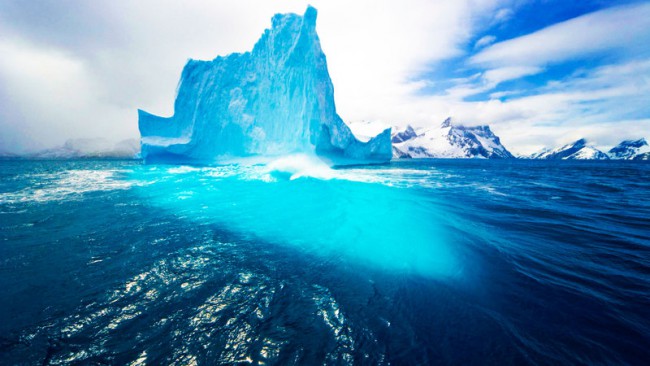
A new study conducted in the Department of geography at the University of Sheffield, showed that melting of giant icebergs water containing iron and other nutrients, is the cause of the unexpectedly high growth of phytoplankton.
This process, known as carbon sequestration, promotes long-term storage of carbon dioxide from the atmosphere, thereby slowing global warming.
During the study, the first of its kind, a team of scientists led by Professor Grant BIGGA analyzed 175 satellite images floating in the southern ocean icebergs, each of which had a length of 18 kilometers. Special attention was paid to the color of water — the indicator of activity of phytoplankton at the ocean surface.
Received in 2003-2013, the photos showed that increased activity of phytoplankton, which has a direct impact on the storage of carbon dioxide in the ocean occurs at a distance of hundreds of kilometers from giant icebergs and at least within one month after the iceberg passed by.
Professor Bigg said:
“This new analysis shows that giant icebergs play a major role in the carbon cycle of the southern ocean. We found elevated levels of chlorophyll on the distance 4-10 times greater than the length of the iceberg”.
The southern ocean plays an important role in the global carbon cycle and is responsible for about 10 per cent of carbon dioxide sequestration on the planet due to biological processes (including growth of phytoplankton) chemical reactions.
The study, which was published in the journal Nature Geoscience, shows that the melting water of icebergs is responsible for 20 percent of the total carbon dioxide sequestered in the depths of the southern ocean.
On materials Science Daily
